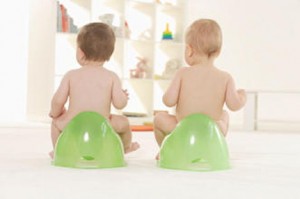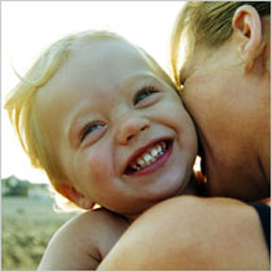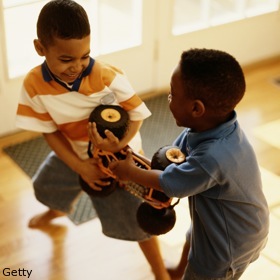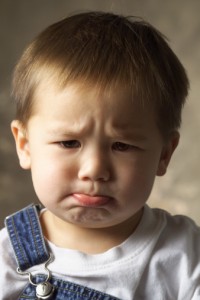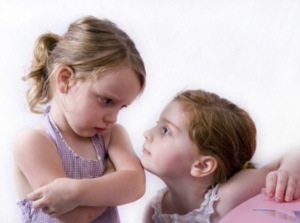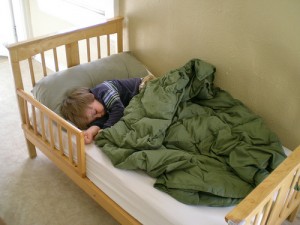So, my 3-year-old sons are finally full fledged on board with the program, but only a few months ago, and I’ll be the first to admit that, being so busy and distracted with a slew of other pressing issues going on in our family, I’d probably not been as diligent, committed and focused on potty training as I should have been. So, when my four older kids went back in school, I made the commitment to concentrate and devote the next few days (and probably weeks, but hopefully not months) to getting the job done!
As the mom of three sets of multiples, I’m often approached with statements like, “You’ve already successfully potty trained two sets of twins, and are now on your third … you must be a PRO … so, what’s the trick to potty training multiples?”
My first response is to say that each of my sets of twins have consisted of children who are very different from each other. Referring to them and perceiving them always as a “set”, or a collective of two little people who should be expected to behave and fit into the same mold as the other, is an incorrect assumption. We as moms of twins know already, even identical twins are complete individuals. With that said, I recall my first set of twins (my girl/girl set) having one (Lauren) being completely ready and compliant by 22 months. She showed the readiness signs of expressing her dislike of wet/soiled diapers, demonstrating an understanding of using the potty, and having dry diapers for longer periods. She also was very verbal at that point and could express her desires and understand instructions quite well. Her twin Kathryn, however, was simply not into it at all, and regardless of her sister’s accomplishments, rewards, and “big girl pretty panties”, just wasn’t interested until she hit 2 and 1/2, at which point, she was ready and basically went from diapers to training pants to cotton panties in the course of a week! I believe that ultimately, Kathryn witnessing Lauren’s successes and rewards did play a part in her decision to “get with the program”, so I do believe that a level of peer pressure is a plus! The gap of time that existed between each child’s completion of the process allowed me to focus and concentrate on one child at a time, which was a plus for me. It also allowed for some one-on-one bonding between myself and each of my daughters, one at a time.
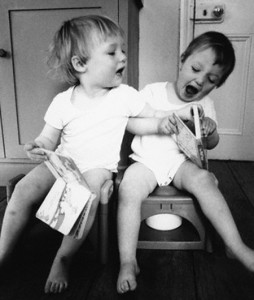 My second set of twins are a boy and a girl. Erin would often imitate her older sisters … a REAL PLUS there! By the time she was between 22 and 24 months, she was very into pretty big girl panties like her sisters wore. Encouraging her to sit on the training potty, understanding and enjoying Elmo’s “I Can Go Potty” book, and rewarding her after her successful visits was almost too easy. She, like her big sisters, showed the emotional and physical readiness signs of graduating from diapers to panties, and by the time she was 26-28 months, she was done. Training pants were used at night, but those didn’t last too long with her either, as she would wake up dry and ready to visit the potty upon getting up. Of course, there were often some middle-of-the-night visits, too. Now, Erin’s twin Brandon’s potty training process was a completely different story all together! Although we encouraged him to sit on his own potty, and rewarded him with his successes along the way, he simply decided that the thrill was gone after a few weeks, and decided to regress almost completely after he’d demonstrated his readiness and we’d thought he was just about trained. Ultimately, Brandon was 3 and 1/2 before we could consider him finally potty trained. He was NOT HAPPY as he watched his poo-poo flush away, so we told him that it was probably a fun thing, like going down a water slide! At that point, he decided to say with each flush: “Bye-bye poo-poo, have a good ride!”
My second set of twins are a boy and a girl. Erin would often imitate her older sisters … a REAL PLUS there! By the time she was between 22 and 24 months, she was very into pretty big girl panties like her sisters wore. Encouraging her to sit on the training potty, understanding and enjoying Elmo’s “I Can Go Potty” book, and rewarding her after her successful visits was almost too easy. She, like her big sisters, showed the emotional and physical readiness signs of graduating from diapers to panties, and by the time she was 26-28 months, she was done. Training pants were used at night, but those didn’t last too long with her either, as she would wake up dry and ready to visit the potty upon getting up. Of course, there were often some middle-of-the-night visits, too. Now, Erin’s twin Brandon’s potty training process was a completely different story all together! Although we encouraged him to sit on his own potty, and rewarded him with his successes along the way, he simply decided that the thrill was gone after a few weeks, and decided to regress almost completely after he’d demonstrated his readiness and we’d thought he was just about trained. Ultimately, Brandon was 3 and 1/2 before we could consider him finally potty trained. He was NOT HAPPY as he watched his poo-poo flush away, so we told him that it was probably a fun thing, like going down a water slide! At that point, he decided to say with each flush: “Bye-bye poo-poo, have a good ride!”
Forcing, bribing, coercing, threatening, punishing … of course, were completely ineffective, so we learned and concluded that no matter how many children you have, and regardless of the fact that as a parent, you basically handle situations in the same manner each child, the INDIVIDUAL child is going to be ready, willing and able only WHEN he or she is ready, willing and able.
Benjamin and Sean had been demonstrating the readiness signs for quite some time, and although they were well-acquainted with their own Mr. Potty, seemed to understand and enjoy Elmo’s potty book, had actually both been successful at wee-wee-ing in their potties so far, were simply not consistent, probably because Mommy hadn’t been consistent enough. With a little more time, concentration and LOTS of POSITIVE REINFORCEMENT (we’ve gone through 2 giant bags of M&Ms), I can finally say that we’re finally about done!
Benjamin finally mastered both #1 and #2 finally just before his 4th birthday. As for Sean, however, he was 4 and 1/2 before he finally decided that pooping in his pants was only going to “earn him” toys being taken away and time-outs! For months, he simply REFUSED to use the potty for #2, while successfully going #1 consistently.
It’s just amazing how strong-willed and individually-motivated (or just plain stubborn) each child can be! If you’re presently experiencing stubborn children who refuse to comply with your potty training, you’re not alone. Just be patient, be consistent with your positive and your negative reinforcement, whatever tactics you use, and don’t give up! They WILL eventually get with the program … especially when peer pressure is applied, say for instance, when it’s time to visit friends with children who are the same age (and ARE potty-trained), and also when it’s time to start school, and no other classmates “poop in their pants”!
My friend, Pam Fierro writes for About.com, as an expert on twins. Here is her advice on potty training twins, which I intend to utilize! http://multiples.about.com/od/pottytraining/tp/pottytrainingtwins.htm
Two other great site for tips: http://www.pottytrainingconcepts.com/CTGY/A-Potty-Training-Multiple.html
and Mayo Clinic’s source: http://www.mayoclinic.com/health/potty-training/CC00060
I wish all of you the best of success you endeavor to potty train your multiples!


